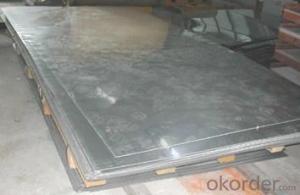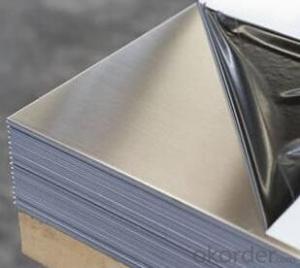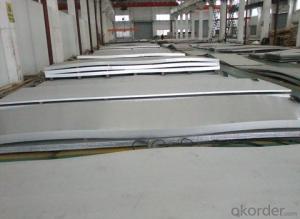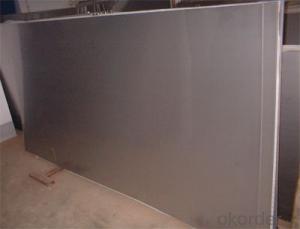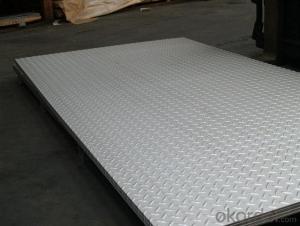Stainless Steel plate and sheet 321 with plenty stock
- Loading Port:
- Shanghai
- Payment Terms:
- TT OR LC
- Min Order Qty:
- 500 m.t.
- Supply Capability:
- 5000000 m.t./month
OKorder Service Pledge
OKorder Financial Service
You Might Also Like
Hot sale stainless steel sheet 201/202/304/304l/316/316l/430
Description of Stainless Steel Sheet:
Description | steel sheet,hot rolled steel sheet,cold rolled steel sheet, steel sheet,sheet,steel plate |
Standard | ASME, ASTM, EN ,BS,GB,DIN, JIS etc |
Application | Steel sheet applies to construction field, ships building industry, petroleum & chemical industries, war and electricity industries, food processing and medical industry, boiler heat exchanger, machinery and hardware fields. |
Packaging | Standard export sea-worthy packing |
Delivery time | 10-30 days |
Quality | No.1 |
Productivity | 500 tons/Day |
Note | Our company has cooperative relation between the domestic agents. Stainless steel sheet can be made accordingto the customers requirements. Fasten delivery. Quality assured. |
Contacts | If you have any question,please feel free contact me. |
Stainless steel sheet surface finish characteristics
Surface finish | Characteristics and application |
2B | The surface brightness and flatness of no2B is better than no2D. then through a special surface treatment to improve its mechanical properties,No2B could nearly satisfy comprehensive uses. |
No.1 | Polished with abrasive belt of grit#100-#200, have better brightness with discontinuous coarse stria, used as inner and external ornaments for building, electrical appliances and kitchen utensils etc. |
No.4 | Polished with abrasive belt of grit #150-#180,have better brightness with discontinuous coarse stria, but thinner than No3, are used as bathtub buildings inner and external ornaments electrical appliances kitchen utensils and food processing equipment etc. |
HL | Polished with abrasive belt of grit #150-#320 on the NO.4 finish and has continuous streaks, mainly used as buildings ornaments elevators, door of building, frontal plate etc. |
BA | Cold rolled, bright annealed and skin-passed, the product have excellent brightness and good reflexivity like mirror, kitchen apparatus, ornament etc. |
8K | The product have excellent brightness and prefer reflexivity can to be the mirror. |
Main Features of stainless steel sheet :
•Escalator, Elevator, Doors
•Furniture
•Production tools, Kitchen appliances, freezers, cold rooms
•Auto Parts
•Machinery and Packaging
•Equipment and Medical devices
•Transport system
Product Details:
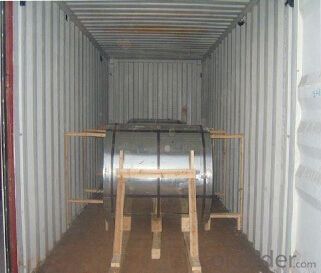
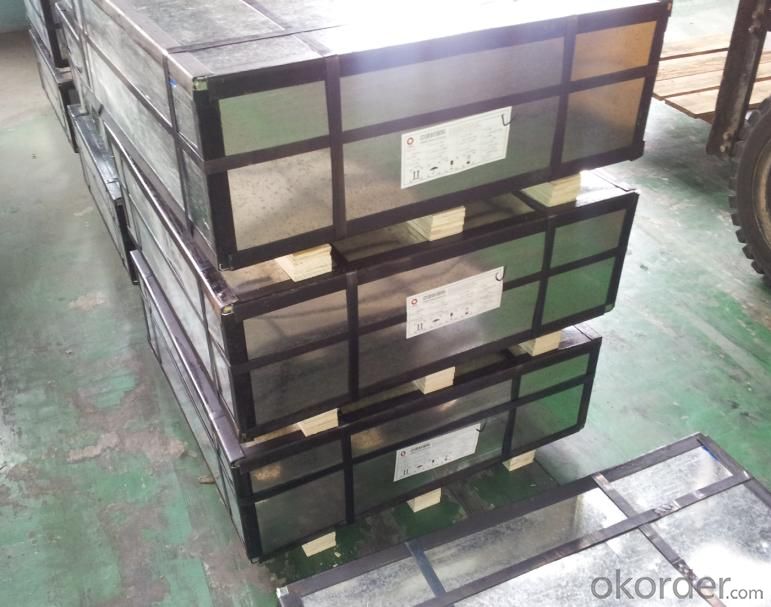
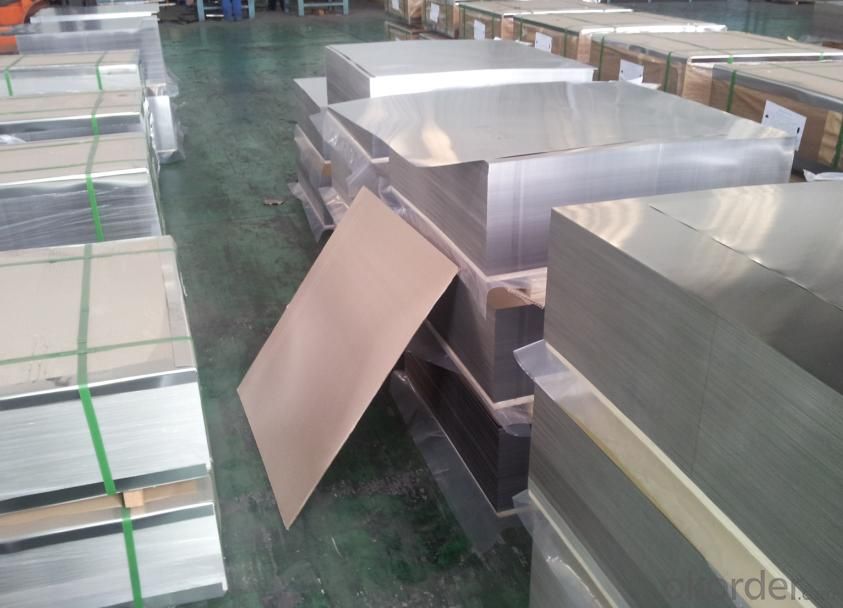
Sandard Seaworth Packing(wooden packing with water proof paper)
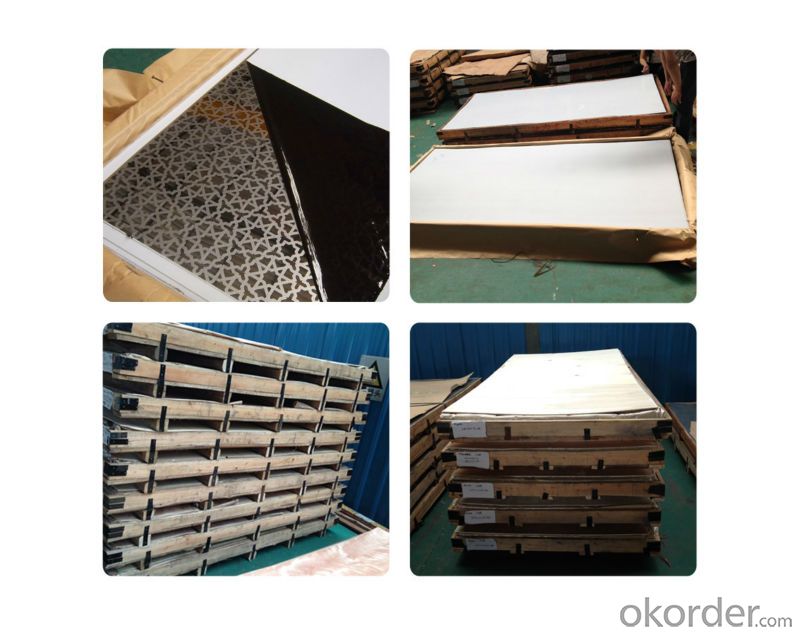
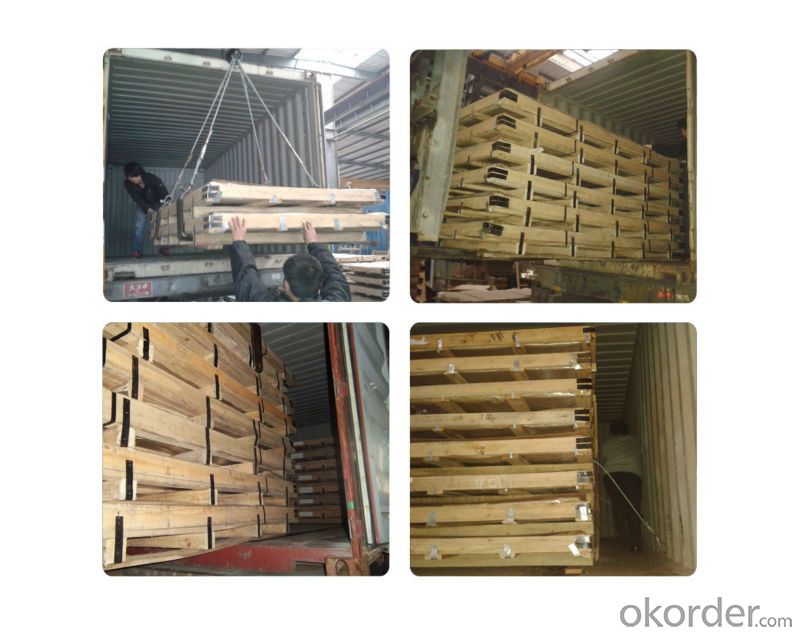
FAQ:
1. What's the quality?
very fine
2. How long get reply?
within 24 hours
If you have any question about stainless steel sheets,donot forget to sending the email to Us! You will get the competitive Price and have a very good experience about the Buying Process! CNBM International Corporation is always your trustful friend!
- Q:How do you determine the grade of a stainless steel sheet?
- To determine the grade of a stainless steel sheet, several factors need to be considered. Firstly, the composition of the stainless steel should be analyzed. Stainless steel is typically made up of a combination of metals such as iron, chromium, nickel, and other elements. The specific percentages of these metals will determine the grade of the stainless steel. For instance, a stainless steel sheet with higher chromium and nickel content will generally have a higher grade. Another important consideration is the mechanical properties of the stainless steel. These properties include the tensile strength, yield strength, and elongation of the material. Different grades of stainless steel will have varying mechanical properties, and these properties can be measured through standardized testing methods. Surface finish is also a factor in determining the grade of a stainless steel sheet. The finish can range from a rough, dull surface to a smooth, polished one. Different grades of stainless steel may have specific surface finishes, and this can be verified by visual inspection or by using specialized equipment. Additionally, the corrosion resistance of the stainless steel sheet plays a significant role in determining its grade. Stainless steel is known for its resistance to corrosion, and higher grades of stainless steel will typically offer better resistance to various corrosive environments. Corrosion testing methods, such as salt spray testing, can help assess the corrosion resistance of a stainless steel sheet. In summary, the grade of a stainless steel sheet can be determined by analyzing its composition, mechanical properties, surface finish, and corrosion resistance. By considering these factors, one can accurately identify the grade of a stainless steel sheet and determine its suitability for specific applications.
- Q:Can stainless steel sheets be used for storage tanks?
- Yes, stainless steel sheets can indeed be used for storage tanks. Stainless steel is known for its high corrosion resistance, making it an ideal material for storing various substances, including chemicals, liquids, and gases. It is highly durable, which ensures a longer lifespan for the storage tank and reduces the risk of leaks or contamination. Stainless steel tanks are also easy to clean and maintain, making them suitable for industries such as food and beverage, pharmaceuticals, and wastewater treatment. Additionally, stainless steel is non-reactive, meaning it does not interact with the stored substances, ensuring the integrity and quality of the materials being stored. Overall, stainless steel sheets are a reliable and versatile choice for storage tank applications.
- Q:How do you join stainless steel sheets together?
- There are various methods to join stainless steel sheets together, depending on the specific application and desired outcome. Here are a few common techniques: 1. Welding: Stainless steel can be welded using various methods such as TIG (Tungsten Inert Gas), MIG (Metal Inert Gas), or spot welding. Welding creates a strong and durable bond between the sheets, ensuring a secure connection. 2. Mechanical Fasteners: Using mechanical fasteners like screws, bolts, or rivets can be an effective way to join stainless steel sheets. This method is often used when disassembly or reassembly is required, as it allows for easy removal and reinstallation. 3. Adhesive Bonding: Specialized adhesives designed for stainless steel can be used to join sheets together. These adhesives create a strong bond while maintaining the aesthetics of the stainless steel surface. However, adhesive bonding may not be suitable for high-stress or high-temperature applications. 4. Clinching: Clinching involves using a special tool to press the stainless steel sheets together, creating a mechanical interlock. This method is commonly used for joining thin sheets and offers a cost-effective and fast solution. It is important to choose the appropriate method based on the specific requirements of the project, including factors such as load-bearing capacity, temperature, corrosion resistance, and aesthetics. Consulting with a professional or conducting thorough research can help ensure the chosen joining technique is suitable for the intended application.
- Q:Are stainless steel sheets suitable for food processing applications?
- Yes, stainless steel sheets are highly suitable for food processing applications. Stainless steel is known for its excellent corrosion resistance, hygienic properties, and resistance to high temperatures, making it ideal for use in the food industry. It is easy to clean, does not react with food, and is resistant to bacterial growth, ensuring food safety and quality.
- Q:What is the machinability of stainless steel sheets?
- The machinability of stainless steel sheets is generally considered to be difficult due to their high strength and hardness. However, with the right tools and techniques, stainless steel sheets can be machined effectively.
- Q:Are stainless steel sheets magnetic?
- Yes, stainless steel sheets can be magnetic. The magnetic properties of stainless steel sheets depend on their composition. Generally, stainless steel is a non-magnetic material. However, certain grades of stainless steel, such as the 400 series (e.g., 410, 416, 420, and 430), contain a higher amount of ferritic or martensitic structures, which can exhibit magnetic properties. On the other hand, the commonly used 300 series stainless steel (e.g., 304 and 316) is non-magnetic due to its austenitic structure. Therefore, it is important to consider the specific grade of stainless steel when determining its magnetic behavior.
- Q:Are stainless steel sheets resistant to acids?
- Acids don't stand a chance against stainless steel sheets. This remarkable material is famous for its ability to resist corrosion, and that includes acids too. You see, stainless steel contains chromium, which forms a protective layer called a passive film. This film acts like a barrier, preventing acids from reacting with the metal. It's like a superhero shield against a wide range of organic and inorganic acids. Of course, the level of resistance can vary depending on the type of stainless steel. Grades such as 304 and 316 are especially tough against acids, which makes them perfect for industries like chemical processing, food processing, and pharmaceuticals. But let's not forget, even though stainless steel sheets can handle acids pretty well, there are some aggressive acids and highly corrosive environments that can still break through their defenses. So, it's crucial to seek advice from experts and choose the right grade of stainless steel for acid-resistant applications.
- Q:Can stainless steel sheets be used for magnetic shielding?
- Yes, stainless steel sheets can be used for magnetic shielding to some extent. While stainless steel is not inherently magnetic, it does have some magnetic properties. Stainless steel alloys contain iron, a magnetic material, which allows them to exhibit weak magnetic characteristics. However, the magnetic shielding effectiveness of stainless steel sheets is limited compared to other materials specifically designed for magnetic shielding, such as mu-metal or nickel-iron alloys. These materials have a higher permeability, meaning they can redirect and absorb magnetic fields more effectively than stainless steel. Nonetheless, stainless steel sheets can still provide some level of magnetic shielding, especially in lower intensity magnetic fields. They can help reduce the transmission of magnetic fields from one area to another, which might be useful in certain applications. However, for high-intensity or sensitive magnetic shielding requirements, it is recommended to use specialized magnetic shielding materials for optimum effectiveness.
- Q:What are the benefits of using perforated stainless steel sheets in acoustics?
- Perforated stainless steel sheets in acoustics offer several benefits. Firstly, they can effectively control and manipulate sound waves by allowing sound to pass through the perforations while reducing the intensity of the sound energy. This helps in creating a more balanced and controlled acoustic environment. Secondly, these sheets can be used as sound absorbers, as the holes in the stainless steel sheet absorb and dissipate sound energy, reducing echoes and reverberations. Additionally, perforated stainless steel sheets are durable, corrosion-resistant, and aesthetically pleasing, making them a long-lasting and visually appealing solution for acoustic applications.
- Q:Are stainless steel sheets resistant to high-pressure environments?
- Stainless steel sheets exhibit remarkable resistance to high-pressure environments. This material boasts robustness and durability, enabling it to endure the immense force exerted by diverse industrial operations, including hydraulic systems, chemical processing plants, and oil and gas pipelines. Its outstanding tensile strength and capacity to maintain structural integrity even in the face of extreme pressure make it highly esteemed. Moreover, stainless steel also possesses corrosion resistance, further bolstering its suitability for high-pressure settings where exposure to moisture or chemicals is prevalent. Consequently, stainless steel sheets are extensively employed in industries that demand materials capable of withstanding high-pressure circumstances due to their exceptional strength and resistance attributes.
1. Manufacturer Overview |
|
|---|---|
| Location | |
| Year Established | |
| Annual Output Value | |
| Main Markets | |
| Company Certifications | |
2. Manufacturer Certificates |
|
|---|---|
| a) Certification Name | |
| Range | |
| Reference | |
| Validity Period | |
3. Manufacturer Capability |
|
|---|---|
| a)Trade Capacity | |
| Nearest Port | |
| Export Percentage | |
| No.of Employees in Trade Department | |
| Language Spoken: | |
| b)Factory Information | |
| Factory Size: | |
| No. of Production Lines | |
| Contract Manufacturing | |
| Product Price Range | |
Send your message to us
Stainless Steel plate and sheet 321 with plenty stock
- Loading Port:
- Shanghai
- Payment Terms:
- TT OR LC
- Min Order Qty:
- 500 m.t.
- Supply Capability:
- 5000000 m.t./month
OKorder Service Pledge
OKorder Financial Service
Similar products
New products
Hot products
Hot Searches
Related keywords
